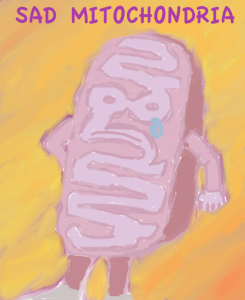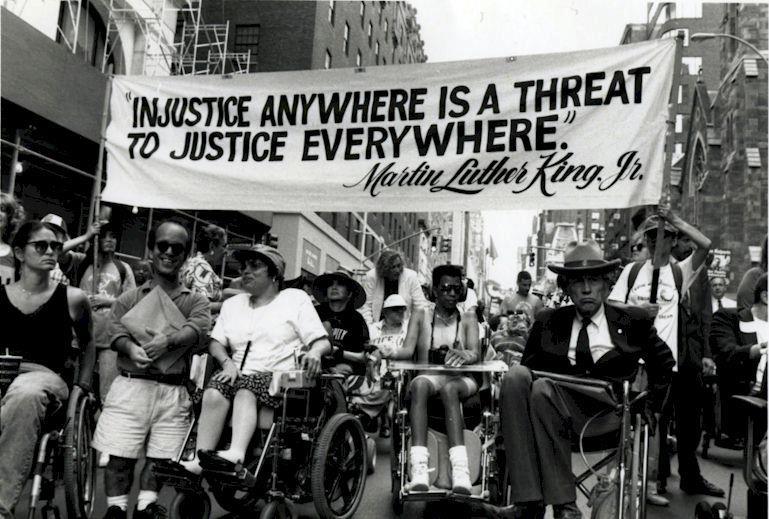It’s a new world, and those of us who have rare disorders are able to connect with and advise each other like never before. For me and my brother Jamie, the rare disorder is mitochondrial myopathy, and back in 1985 we were told we were among JUST 24 cases identified worldwide of what was then called “primary carnitine deficiency.” Today, “carnitine deficiency” is recognized as merely a symptom of numerous types of mitochondrial diseases, and there are WAAAY more people diagnosed than the two dozen identified in 1985, and some mitochondrial diseases even have names now (like Leigh’s disease, MELAS, MNGIE). Sadly, my type of mito has yet to be identified,
The United Mitochondrial Disease Foundation—UMDF, which didn’t exist until 1996—says there’s a lot of cases added each year, with “1,000 to 4,000 children in the United states born with a mitochondrial disease” annually. As one of my favorite mito mom bloggers put it, it feels like an epidemic. I’d agree, rates of mitochondrial disease are up, and I think environmental factors are to blame…the fact that we pump pollutants and radiation into the natural world without knowing the potential mito-toxic consequences, and then we eat, drink and breathe from the natural world, and the external becomes the internal as those food materials become the matter you’re made of, the building blocks of the human. But the causes of the mutations that trigger mitochondrial disease understandably take a back seat for people like me and families who’re in daily coping-and-survival mode.
I’ve been following some of the mito blogs, and I am awed at how parents and loved ones of mito children (kids similar to me as a kid) are using the web to support each other. I wish this had been available for me and my mom when I was a kid (back in the 1980s and early ’90s).
As a survivor of childhood mito, I’d really like to share what I know, help others avoid some of what I’ve suffered, be a knowledgable listener and advisor among the mito bloggers, though I know I don’t exactly fit in with the mom blogs. I really want to help, and when I see kids going through what I went through, the BiPap, the chronic pain—which is still a constant battle for me—I really want to talk to, help, that family. And I want to help build a network of mito-activists and mito-knowledge to help those of us dealing with these diseases, who are too often treated horribly by the medical-industrial-complex, like anyone with complex medical needs that are difficult for them to understand. We need a veritable army of people behind us just to survive the system. I’m not sure exactly how to get such a network off the ground. But paired with the experience and knowledge mito bloggers have collectively, such a community could be a game changer.
Speaking of mito knowledge, there’s been controversy recently about the study published in Nature Medicine that proved a link between L-carnitine and arteriosclerosis, gunk in your arteries that causes heart attacks and stroke. Since the study focused on giving L-carnitine to mice with normal microbiota, normal gut processes and digestion, those of us taking daily L-carnitine supplements to treat a mitochondrial disease wonder how this effects us, if at all. With its emphasis on red meat (the most carnitine-rich part of the American diet), the study has been covered heavily all over the mainstream news channels—THIS from CBS News is a representative sample—with a lot of pics of red meat and beef B-roll producers love. When I think of this study, I don’t think of beef, I think of research residents giving mice micro-baby bottles of liquid L-carnitine in their cute mouse mouths, but that’s just me.
Because of this high-profile news and the—not necessarily invalid—concerns about arteriosclerosis, I’m being pushed to discontinue my L-carnitine supplements. The UMDF recently issued a statement urging caution. Because of the specifics of my mito journey, I’m reluctant to drop the carnitine.
I first started taking carnitine through Dr. Zellwegger’s clinical trial for the FDA’s safety and effectiveness human trials 1984-1985, via University of South Alabama, before carnitine was on the market. Literally I’m getting carnitine in my baby bottle. Then we couldn’t get carnitine when the trials ended.
Then in September 1991, when I was 9, I had what I call a “mito collapse” immediately following back surgery and an intense infection at the surgical site. The thin muscle I had was gone in less than a week, the opposite of “slow progression.” I went into a tailspin, ileus, dismotility and malabsorption so extreme that I was put on TPN. All your classic mito symptoms, at least that’s how Mom and I perceived it at the time. It makes sense that, in an inborn error of metabolism, the digestive system—where the heavy lifting of metabolism occurs—would be greatly effected, and BOY was it during this time. My digestive system grinding to a halt, the futile cramping, it was the most horrific thing I had experienced up to that point. For a few months, all I could keep down by mouth was the peach-flavored version of this very specific carbonated water, something like this.
Fortunately, carnitine was on the market, and some time very close to the day I began using the BiPap, I was started on the L-carnitine. Post-levocarnitine, the digestion problems ceased, and I haven’t had any ileus or needed TPN since that time. The supplements seemed to stop the free fall.
Ileus and dismotility haven’t been a problem since, nor has there been another “mito collapse,” though there is pretty much nothing left to lose in terms of muscle, and I have been 24/7 vent-dependent for almost 20 years, 22 years if we count the BiPap. It’s unlikely I could survive another “mito collapse.”
So I’m scared to go off carnitine… but never say never. I would be willing if it’s part of an audit of my entire “mito cocktail”—which since 1996 or thereabouts has been Levocarnitine, B2 and CoQ10—in totality, with other things changed, added, a systematic approach.
Each of our journeys with mitochondrial diseases are different, certainly none are easy, and many days it feels impossible. I really hope we can communicate more, network more, putting our knowledge together and gaining strength in numbers. Please comment below or on Facebook or Twitter.
In mitochondrial solidarity,
Nick
